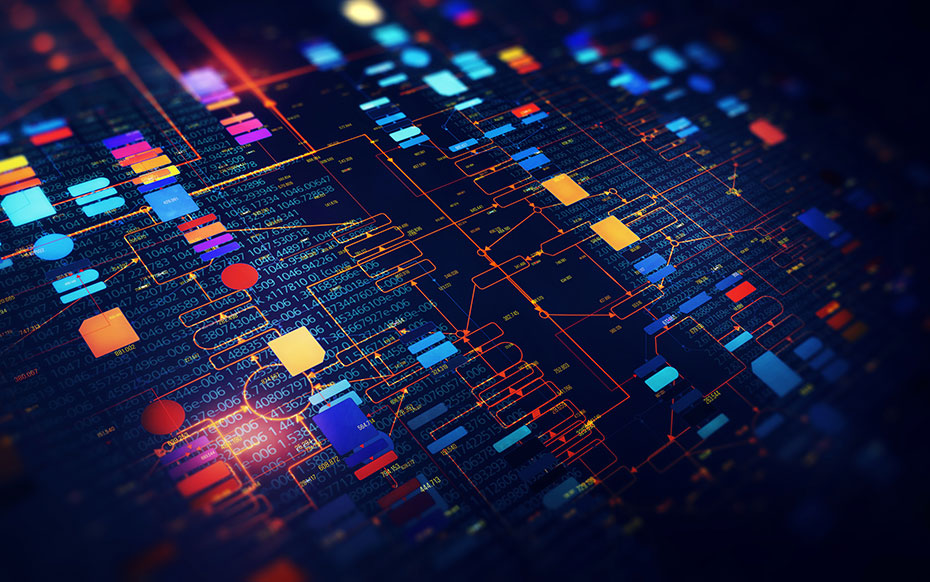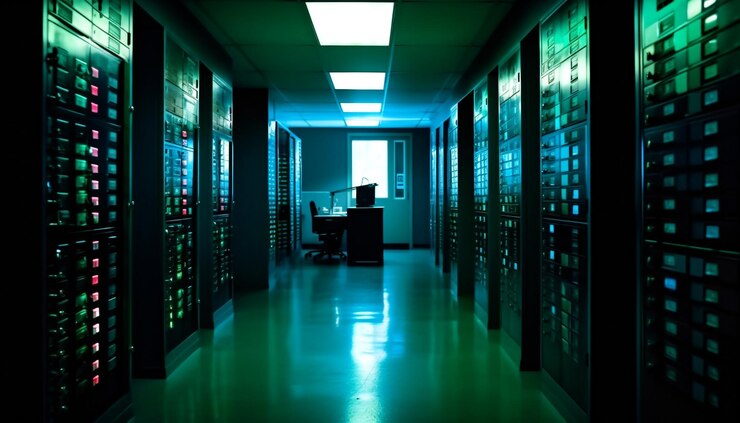Automated, digitized, and data-centric. Businesses strive to achieve these three qualities, and their importance compounds each year. We’re at a point in our technological advancement where it’s possible for a multimillion dollar to be completely virtual. None of this would be possible, or desirable, without major progress in data protection and IT infrastructure security.
A robust IT infrastructure framework doesn’t just protect your data and operations; it’s necessary for financial stability and building a reputation with your clients. This article dives into what IT infrastructure security is and why exactly it’s necessary for your success. Once that’s established, we’ve provided a list of best practices that can help you achieve success and security.
The Value of IT Security
Reputation and Trust
First and foremost, it is your responsibility to safeguard any information you request from your clients. Knowingly disregarding IT security protocols is a breach of trust and ethical business practice. In today’s age, all stakeholders are increasingly concerned with the variety of ways malicious actors can use their information.
Organizations must safeguard critical information, including, but not limited to, customer data, financial records, intellectual property, trade secrets, and demographic information. Ibex KSA, along with Ibex offices all over the world, have built a reputation of trust by having recent, updated, and relevant security certifications. A breach doesn’t just harm your clients and your reputation; it also opens you up to possible litigation for negligence.
Financial Loss
All of the consequences mentioned in the section above directly lead to financial losses for a company. In the case of litigation, it’s easy to see how destructive legal fees and fines can be. Companies have gone bankrupt over a single lawsuit, and the precedent exists for good reason.
Additionally, damage to your reputation loses you clients, causing a dip in revenue at a time your organization needs all the resources it has to recover from the breach. IBM estimates the average cost to an organization for a single data breach, taking all costs into account, is over $4.3 million. Not only can that amount destroy a business, it can personally bankrupt business owners.
Compliance and Continuity
Depending on what industry you’re a part of and where you conduct your business, you will be subject to a variety of regulations. When it comes to data privacy and security, failing to comply with HIPAA and GDPR regulations results in fines and even seizure of operations. This adds to the long list of reasons you need robust IT infrastructure security. Any downtime in operations, no matter what the cause and cost, will harm your reputation and your business.
The 5 levels of IT infrastructure security
Infrastructure security is an all-encompassing term that encompasses your networks, operation systems, data centers, and firewall development. All strategies and procedures are developed with the sole intention of ensuring the reliability and integrity of your organization. For ease of understanding, we can break down the IT infrastructure security network into 4 distinct sections.
Physical Security
Being the closest to our traditional understanding of ‘security’, your physical assets need to be kept under literal lock and key. Servers, network devices, data centers, organization-issued devices for your employees, and any hardware that can access your network needs to have the proper security protocols. These include:
Access Controls
You need to limit and manage the people that use your network and data every day. Implement visitor management procedures, badge systems, and biometric authentication to restrict access to sensitive materials.
Surveillance and Intrusion Detection
A high-quality surveillance system set up in strategic locations is worth whatever it costs you. Couple this with sensors and alarms to detect unauthorized entry into restricted areas, and you can rest assured.
Environmental Monitoring
Your physical IT assets don’t just need to be protected from people. They also need maintenance and the right environment, like all machinery. Regularly monitor temperature, humidity, and power supply to reduce the chances of system failures and data loss.
Network Security
Even if your physical network infrastructure is secure, there are a litany of ways somebody can get in and wreak havoc. Ibex KSA has one of the best network security frameworks in the MENA region, and help mitigate the risk of compromising your network:
Firewalls:
The bread and butter of all network security and hacker prevention, firewalls protect your channels from unnecessary traffic, block alien access, and prevent malicious attacks.
IDPS:
Intrusion Detection and Protection Systems are the virtual equivalent of the aforementioned sensors and surveillance cameras. They keep an eye on all the traffic in your network, detecting suspicious behavior and proactively preventing attacks.
VPNs:
It may come as a surprise to some readers, but Virtual Private Networks are great for professional use too. They create a secure, encrypted, communicable channel between users and your network.
Encryption:
Simply put, encryption scrambles your message in transit, so it’s illegible for anyone that tries to steal information. Once it reaches the intended user, the message unscrambles itself according to pre-installed protocols.
Virtualization:
Converting physical servers into virtual machines is great for cost control, but opens you up a new possible front for digital attacks. IT infrastructure auditors have had to develop more complex, automated systems of data collection and threat detection to account for the ease with which virtual machines can be created, destroyed, and edited.
Application security
It’s pretty common for an organization to have a custom-built CRM or ERP software. These require an additional layer of security to prevent unauthorized access, data breaches, or malicious code executions. You need robust authentication protocols to prevent malicious parties executing harmful code injections like SQL injections. Output encoding converts harmful characters to a safe format before allowing them onto the network, protecting you against cross-site mapping.
Data Security
Data security is paramount for any business, in any industry. Clients trust their service providers with very sensitive information that could cause very serious harm in the wrong hands. Without a robust data security infrastructure, it’s nearly impossible to build a positive reputation.
- Encrypt all your data, when it’s in transit in communication or when it’s at rest in your servers. It’s the best way to prevent unauthorized access and interception.
- Implement strict access controls across your organization.
- Have a comprehensive Data Loss Prevention plan in place for any mishaps or damaged servers.
- Make sure you backup all of your critical data regularly on off-site backups in case of a system failure or hack.
IT Infrastructure Audits
IT audits are a systematic review of all your IT systems, applications, and systems to identify any lapses in your security infrastructure. While these audits can be internal, there are dedicated organizations that conduct these audits for you. These auditors ensure regulatory compliance, and help you build confidence with your stakeholders.
IT Security Best Practices
In this section, we’ll go into more detail about the different methods, techniques, tools and strategies you can use to build a secure IT infrastructure. The following are some of the protocols ibex KSA uses to secure their, and their clients, IT infrastructure.
Access Controls:
- Implement a framework for strong, unique passwords for all your employees that are regularly updated. Most industry standards require you to change passwords every 3-4 months.
- Multi-factor authentication adds an extra layer of security to users. This can include multiple combinations of authentication techniques like passwords, biometric scans, or security tokens. You can also require multiple people to approve access to data.
- Role-based authentication makes sure only relevant stakeholders can access data relevant to their roles.
Patching and Updates:
- It’s essential for your organization to have a comprehensive Patch Management Process. It helps you idenityf, test, and deploy all your security patches in time.
- You can also consider Automated Patching, reducing the risk of human error and streamlining the process
- Regardless of what kind of patches you pick, Patch Testing in a control environment should be standard procedure.
Security Awareness:
You can have the most advanced security protocols on the market, but it can all be undone by uninformed employees. Bi-annual security trainings for maintenance and updates will help you run a tight, secure ship.
- Malicious actors will try to trick employees into opening harmful links or downloading attachments that infect their system or your entire network. Employees need phishing awareness to recognize and report any suspicious activity.
- Password hygiene refers to the ‘health’ of an employee's codes. Passwords need to be strong, unique, and impossible to guess. Of course, sharing passwords with anybody should be strictly forbidden.
- It’s unrealistic to expect all of your employees to know exactly what to do in the face of all security risks. Instead, promote a culture of immediately reporting suspicious activity.
Incident Response:
You can’t predict and preempt all security threats. It’s equally important for you to know how to deal with a problem if it slips through the cracks. A dedicated incident response will help you create a plan to respond to threats and limit the damage breaches can do. The team needs to have clear, comprehensive plans ready in case of a breach, and all these plans but be tested for effectiveness.
Network Segmentation:
Similarly, you cannot count on your network security policies to be 100% effective. You need to prepare for the possibility of a network breach and have a plan for damage control. First and foremost, network segmentation divides your network into isolated sections that limit the spread of malware - like segments in a ship to stop the spread of water. Additionally, use a demilitarized zone to separate public-facing servers from your internal network. Ibex KSA uses both of these techniques to protect their network from any malware or malicious data injections.
Supply Chain Security:
Most businesses work with other organizations to supplement & outsource their processes, acquire supplies, and a variety of other reasons. It’s important for all of your associates to observe a similar standard of security to prevent any lapse in security.
- Implement a vendor risk assessment before finalizing any relationships. Look out for previous instances of a security breach, certifications, and market reputation.
- Include strict and non-negotiable security protocols in your service contract to uphold your security standards and avoid liability in case of a breach on their end.
- Have regular checkups to ensure your stipulated security protocols are being followed. Offer training and oversight to help your suppliers uplift themselves to your standards.
- If your industry is subject to regulation, ensure all your vendors and partners are compliant.
These best practices will help you build an IT security infrastructure that can overcome the vast majority of security vulnerabilities. Protecting sensitive data and defending yourself from the increasing culture of cyberattacks is the only sustainable way to build a robust, reputable business.






